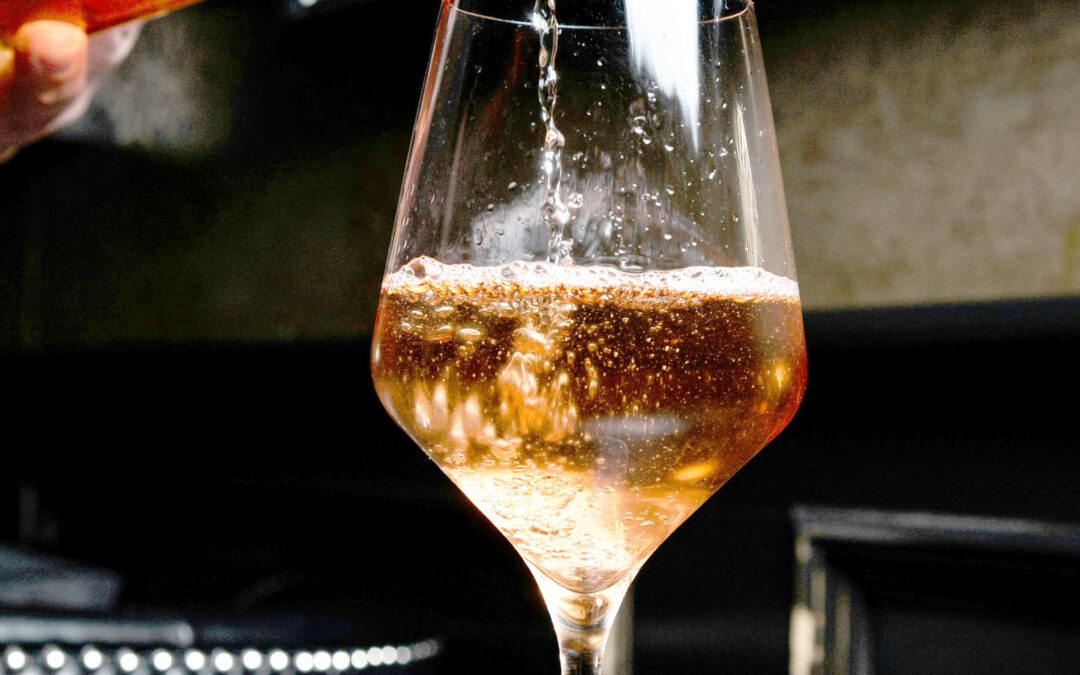Drink Up!
In the last few articles, I’ve attempted to bring clarity to terms used in the language of wine. I’ll conclude this discussion by diving into terms used to describe the aroma, taste, and feel of the wines we enjoy.
“Mouthfeel” describes the overall tactile experience of wine in our mouths from the first sip through swallowing. This includes the weight of the wine on our tongues, the viscosity, the smoothness or astringency, and even the temperature. “Body” directly relates to the mouthfeel. You may remember my example of skim milk representing a light-bodied wine, whereas whole milk represents a full-bodied wine. Drink a light-bodied wine, such as a French Gamay, like Thevent & Fils Macon Pierreclos Rogue, followed by an Argentinean Malbec, such as the El Esteco Don David Malbec Reserve. The Malbec feels heavier and more viscous, while the Gamay feels lighter and smoother. Body can be observed in the glass itself. Slowly move the wine around the sides of your glass and watch as the drips roll down. A more full-bodied, viscous wine will form slow-moving, thick “wine legs.” A lighter-bodied wine has fewer legs and is more water-like in the glass.
Another factor of mouthfeel, temperature, refers to the preferred serving temperature of a wine, and is used when describing the alcohol content of the wine. A full-bodied wine tends to have higher alcohol content, making the wine feel warmer in your mouth and throat.
“Astringency” also plays into the mouthfeel of wine and is related to tannins. “Tannins,” scientifically speaking, are a phenolic compound. Phenolic compounds are one of the most significant secondary metabolites (the most important components behind the health benefits and medicinal properties of the plants) and are largely responsible for the antioxidant properties attributed to many “superfoods.” Tannins are present in the skins of wine grapes. After harvesting the grapes, they are crushed to separate the juice, referred to as “must,” from the skins, seeds, and stems, called “pomace.” If a red wine is the winemaker’s objective, the “must” and the “pomace” remain in contact during the next step of maceration, a soaking process where the tannins are gradually transferred from the skins to the juice. The juice will take on the color, the flavor, and the antioxidant qualities discussed above. The duration of maceration depends on how tannic the winemaker wants the wine to be. For most red wines, maceration can be as short as a week or two, and as long as a month or so.
Tannins also add to the flavor of the wine. Prior to fermentation, grape juice is sweet. In fermentation, yeast consumes much of the sugar and turns it into alcohol and carbon dioxide. The sugar that remains is called “residual sugar” and is a major determinant in how sweet or dry the wine is. Tannins have a slightly bitter taste that, together with residual sugar, adds complexity to red wine. Bitterness may not sound appealing, but think of how tea, coffee, and dark chocolate have bitter components and are still delicious. It is the same for wine.
Finally, tannins give wine an “astringent effect,” commonly referred to as “dryness.” Try a Pinot Noir (a relatively low-tannin red wine), a bottle of Cabernet Sauvignon (a relatively high-tannin wine), and a bottle of Syrah/Shiraz. A couple Pinot Noir options are the Domaine Valéry Le P’tit Renaudat from France, or the Montinore Estate Pinot Noir from Willamette Valley, Oregon. For the Cabernet Sauvignon, try a Cab-based Bordeaux blend like La Griffe de Barreyres Haut-Medoc 2018, or try the Treanna 2023 Cabernet Sauvignon from Paso Robles, California. For a Shiraz, try the Penfolds Koonunga Hill Shiraz from Australia or the Truchard-Syrah from California. Pour a little of each and observe them side-by-side. Notice the variations in darkness and opacity from the least to the most tannic. Take a few sips in order of least to most tannic and notice the astringent effect you’re experiencing in the more tannic wines.
“Acidity” is what makes white wines crisp and refreshing. Tartaric acid and Malic acid are natural elements in wine grapes. Acidity can be realized as a slight tart or sour taste. High-acid wines can cause you to salivate after taking a sip. This acidic effect is why white wines are generally considered to be more refreshing than red wines. White wines with insufficient acidity taste flat and are less refreshing. For white wine, try a high acid varietal, such as the Nik Weis St. Urbans-Hof Riesling from Mosel, Germany or the Infamous Goose Sauvignon Blanc from New Zealand. Then, grab a lower acid Chardonnay, such as Harkan or Sonoma-Cutrer from California. To experience acidity in red wines, use the same samples of Pinot Noir and Cabernet Sauvignon from above. Notice how much lighter, crisper, and more refreshing the higher acid wines feel in your mouth. That is the acidic effect.
“Balance” in wine-speak is a reflection of how well the wine integrates these key elements of flavor. It is a highly subjective judgement, as each wine consumer has his or her own perception of balance. That said, a likely reason that Cabernet Sauvignon is America’s most popular wine is that it is a very balanced red varietal. Many Cabs are dry, but not overly astringent, medium to medium-high in tannins, medium acidity, and medium in earthiness and fruitiness. Two outstanding examples are the Truchard Cabernet Sauvignon from Carneros, California and the Chateau Monbrison Margaux from Bordeaux (a Cabernet Sauvignon-dominated blend).
For a white wine, try the Chevreau-Vigneau Vouvray Cuvee Silex from the Loire Valley of France. In my humble opinion, it is the perfect balance of fruitiness, minerality, and acidity. The Cartuxa Evora Tinto Reserva 2018 is also a perfect example of a balanced white with a long finish.
It seems appropriate to close with the wine characteristic referred to as finish. “Finish” is the sensory sensation that occurs after you swallow the wine. Every taste element factors into the finish. After you swallow, do you still perceive the wine as balanced? Or does it seem fruitier, more tannic, or too acidic? “Duration” of flavor is a key element of finish. How long does your sensory experience continue after the wine has been swallowed?
I hope these explanations enhanced your understanding of the vocabulary used to describe wines and increased your appreciation for the beverage. Contact me at dsetley@passionvines.com or stop in the store. Until next time, happy wining!
David Setley is enjoying his retirement from higher education as a wine educator and certified sommelier at Passion Vines in Somers Point, New Jersey.

















